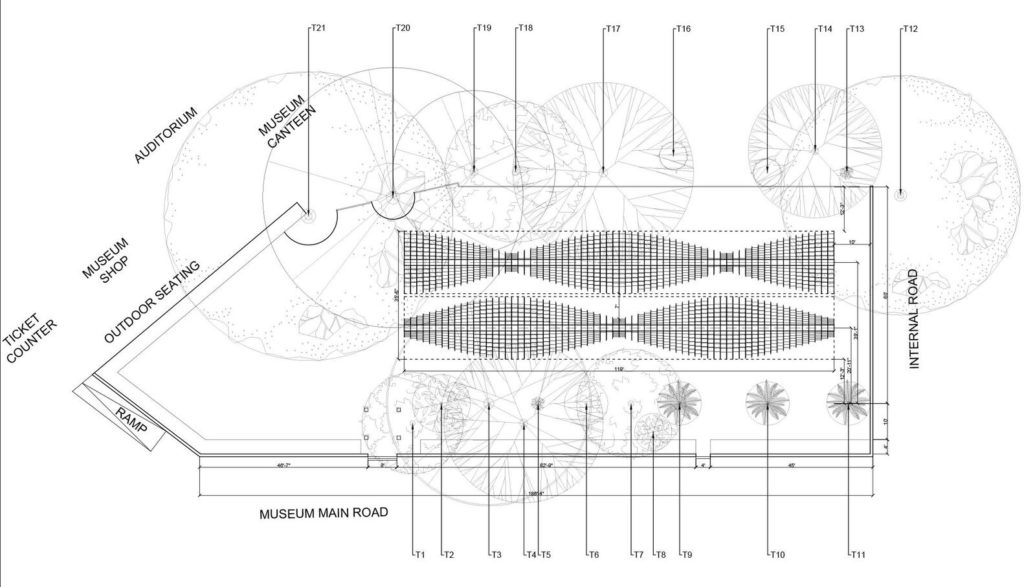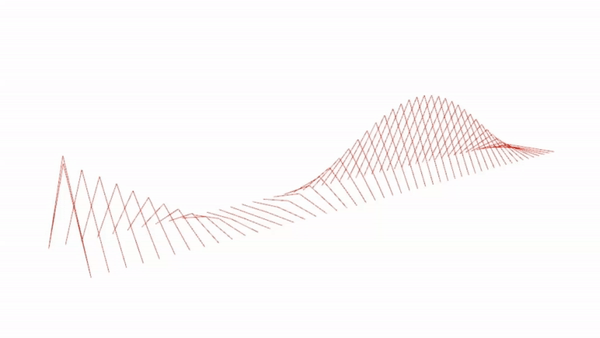Computational Design 1

The “BookWorm” pavilion aims to foster a sense of learning through the creation of an interactive learning space. Most library and institutional structures are often intimidating for children. The aim was to create a landscape of books that invite children to explore and learn simultaneously. We wanted children to engage in “reading” as a fun activity, encourage children to pick books and read, irrespective of language. The pavilion “worms” through the landscape to offer a unique browsing experience along a meandering pathway.

The 35-metres-long pavilion winds its way through the museum gardens.
The structure is built using 3600 modular pre-fabricated components, meaning that it can be easily dismantled, transported and reassembled on different sites. deployed on site within a week, the pavilion also boasts a low carbon footprint and promotes sustainable building technologies.
Concept

By adopting the sinuous curves, inherent in the sine wave, the pavilion achieves a fluid, dynamic form that mimics the organic flow of a bookworm navigating through a landscape of knowledge. The sin curves are not merely ornamental but serve as the guiding principles for constructing the pavilion’s skeleton, determining points, and orchestrating a harmonious connection of curves. This parametric approach, rooted in the sine wave, imparts a unique aesthetic and structural coherence to the pavilion, embodying a synthesis of mathematical precision and architectural innovation.

Pseudo Code

Video

